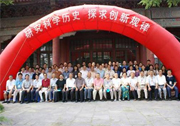| 英文摘要: |
The three-region theory, which divided the air into warm, cold, and hot strata from bottom to top, was the paramount theory for explaining meteorological phenomena in medieval Europe. Such missionaries as Matteo Ricci, Francisco Furtado and Alfonso Vagnone introduced it into China during the seventeenth century, where it had a significant influence on Chinese meteorological knowledge. Chinese scholars endeavored to understand and assimilate this theory based on the traditional yuanqi 元氣 (original substance or primal vitality) theory or yinyang 陰陽 (negative and positive principles) theory, so as to either broaden the range of the three regions, or to indicate that there were no definite boundaries to them. In this context, Jie Xuan 揭暄 drew a meteorological illustration entitled Rihuo xiajiang yangqi shangsheng tu 日火下降暘氣上升圖 (Illustration on the descent of the sun’s warmth and the ascent of warmed air), which epitomized how Sino-Western scientific encounters inspired new ideas. |





